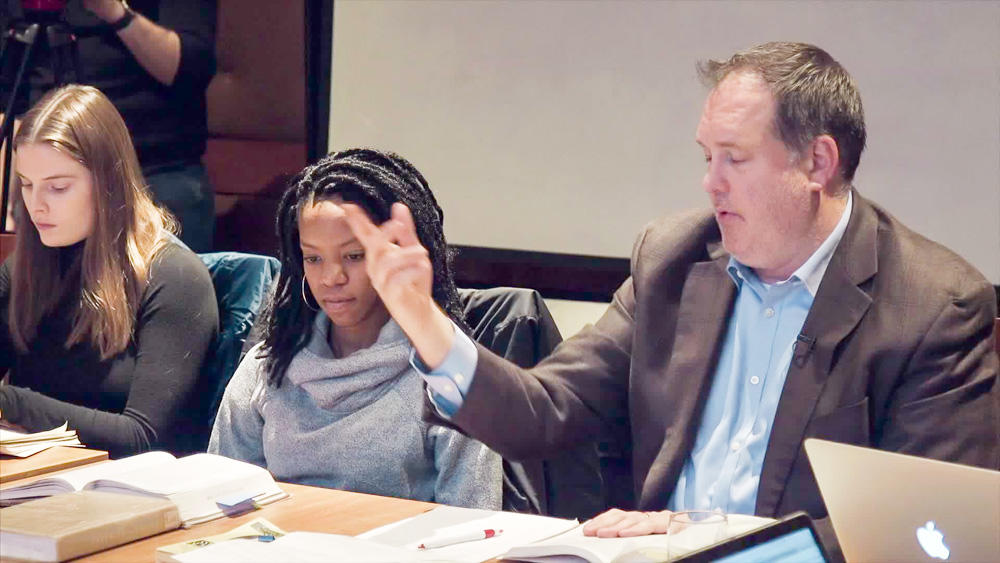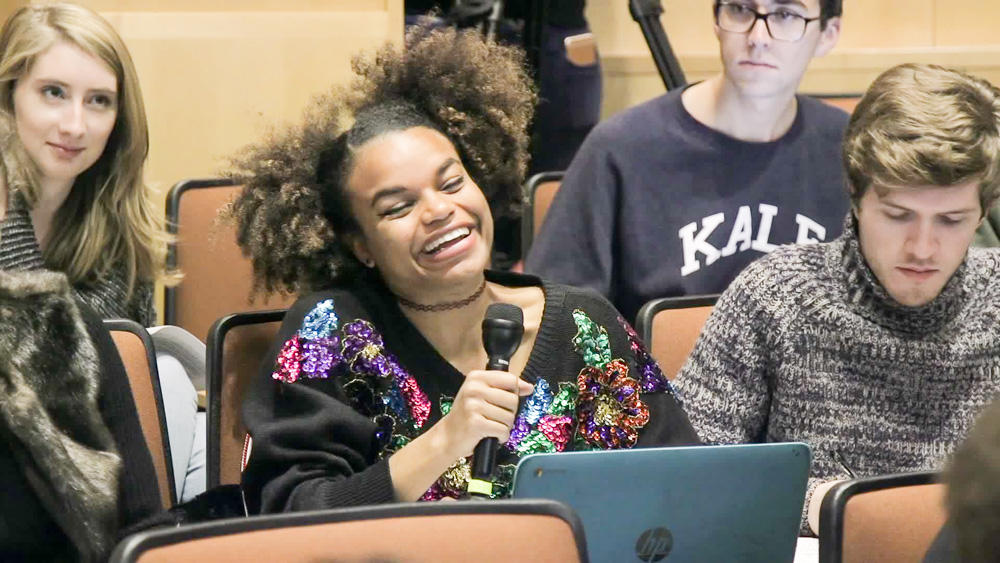Students enter classrooms expecting to learn new material from the sources instructors select as well as from instructors themselves. An often underappreciated source of new learning, however, remains a student’s classmates. Fellow students’ fresh perspectives can foster new ways of thinking and yield constructive, unconsidered insights. In this video, Brett Flehinger describes why he refers to his class as a “collective brain,” a metaphor for the collaborative, participatory learning process he strives to create in his lecture classroom.
Fostering a culture of valuing different ways of thinking
Instructor
Brett Flehinger, Lecturer on History
Student Group
Undergraduate
School
Harvard College
Course
American Populisms: From Thomas Jefferson to the Tea Party + Trump
Group Size
38 students
- Invite student-to-student dialogue so students can build on one another’s ideas. When a student presents an interesting yet underdeveloped idea, encourage others in the class to help push that idea forward. An instructor’s probing questions can help spur thinking to advance ideas.
- Allow student contributions to shape lectures. Reminding students they are not merely passengers on a predetermined lesson trajectory but collectively share a crucial role in navigating the journey class takes can help build greater buy-in for collaborative learning.
- Assist students to value diversity of thought. Especially among undergraduates, with students coming from different backgrounds and enjoying different levels of expertise, richer, more nuanced conversations may result when tapping into this classroom diversity.
- When surveyed about the traits of safe classrooms, one identified by students included nonjudgmental peers open to new ideas or perspectives. Students reported making greater efforts to be open-minded when surrounded by such peers (Holley & Steiner, 2005).
- In a collaborative learning environment, students are able to learn from multiple sources of knowledge. Because students enter classrooms with previous knowledge and different levels of expertise, having multiple sources of knowledge can be beneficial because some students may need additional information that goes beyond the scope of what the instructor plans to teach explicitly (Graham & Stacey, 2002).
- A blog post from Teaching & Learning in Higher Ed describes techniques instructors might use to help students practice responding to each other
- In another Instructional Moves video, Professor Tim McCarthy describes how he models the discussion norms he aims to cultivate in students




